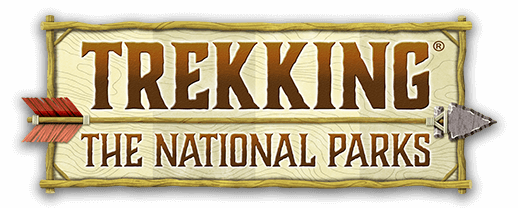Acadia National Park
Located: Maine - Established: February 26, 1919
The Park: Acadia National Park is a diverse landscape featuring sandy coastal beaches, rugged granite shorelines, forested woodlands, wetlands, lakes, islands and the tallest mountain on the eastern seaboard! The lands making up the first park east of the Mississippi were largely donated by private citizens who wished to preserve the area's scenic vistas, mountains, woodlands and shoreline.
Those who contributed to the creation of this park include: John D. Rockefeller, Jr. who donated 45 miles of classic carriage roads that weave about Mt. Desert Island; George B. Dorr, known as the “father of Acadia” and Charles W. Eliot, who took his deceased son’s passion for this park and helped to preserve it for all to enjoy.
If you’d like to be one of the first people to see the sunrise on the continental US, get out of your jammies early and make your way to the top of Cadillac Mountain. If you do this in the high season, plan on getting to the summit by 4 am. Parking is limited and there will be plenty of people joining you! I was fortunate to grab the last parking space at 4:05am!
Acadia is spread out over three unconnected landmasses. The majority of the park is found on Mt. Desert Island located 28 miles SE of Bangor, ME. The granite mass that makes up the island was carved by massive glaciers separating it from the mainland. The Isle au Haut section of the park is accessible via passenger ferry from Stonington. Schoodic Peninsula is the only portion of the park located on the mainland.
When to visit: Acadia is open year round. The peak season is July and August. The fall colors attract large crowds in September and October. The full fall color explosion typically occurs around Columbus Day.
Things to do: A visit to Acadia offers outdoor enthusiasts a wide variety of activity including: bicycling, bird watching, boating, climbing, fishing, hiking, horseback riding, fall color leaf peeping, photography, swimming, sightseeing and tide pooling.
Driving the 20-mile Park Loop Road will expose you to Frenchman’s Bay, Sand Beach, Thunder Hole, Otter Cliffs, Jordan Pond, the Bubble, Cadillac Mountain, several Carriage Road Bridges and other noteworthy sites.
If you prefer to let someone else do the driving, take one of the park's narrated guided bus tours or hop on the free Acadia Shuttle.
Day hikes: Driving the loop is rewarding and we encourage you to get out of the car and trek about this park. Acadia offers 125 miles of hiking trails with a wide range of physical exertion from very easy (flat terrain) to the strenuous (steep grades). The trail along the coast between Sand Beach and Otter Point is breathtaking!
Wildlife: The park is a sanctuary for a wide variety of wildlife including sea and song birds, coyotes, deer and tide pool creatures.
Where to stay: Blackwoods and Seawall Campgrounds are located on Mt. Desert Island. Duck Harbor campground (5 primitive sites) is located on Isle au Haut. Lodging is available on Mt. Desert Island in Bar Harbor or on the mainland.
Memorable Moments: Sunrise atop Cadillac Mountain and an early morning foggy walk along Ocean Path.
Trivia: The first national park east of the Mississippi River, Acadia was originally named Lafayette National Park when founded in 1919. The name was changed in 1929.
Banner: Rocky cliffs near Otter Point on a foggy morning.
Experience these Check List:
- Stop by any of the 6 Visitor and Information Centers
- Sunrise at top of Cadillac Mtn
- Drive Park Loop Road
- Hike Sand Beach to Otter Point
- Fall Leaf Peeping
- Tour the Carriage Roads onbike, foot or horseback.
- Bass Harbor Lighthouse
- Jordan Pond
- Thunder Hole
- Schoodic Peninsula
- Isle au Haut
Trekking Acadia...park visit #44.





